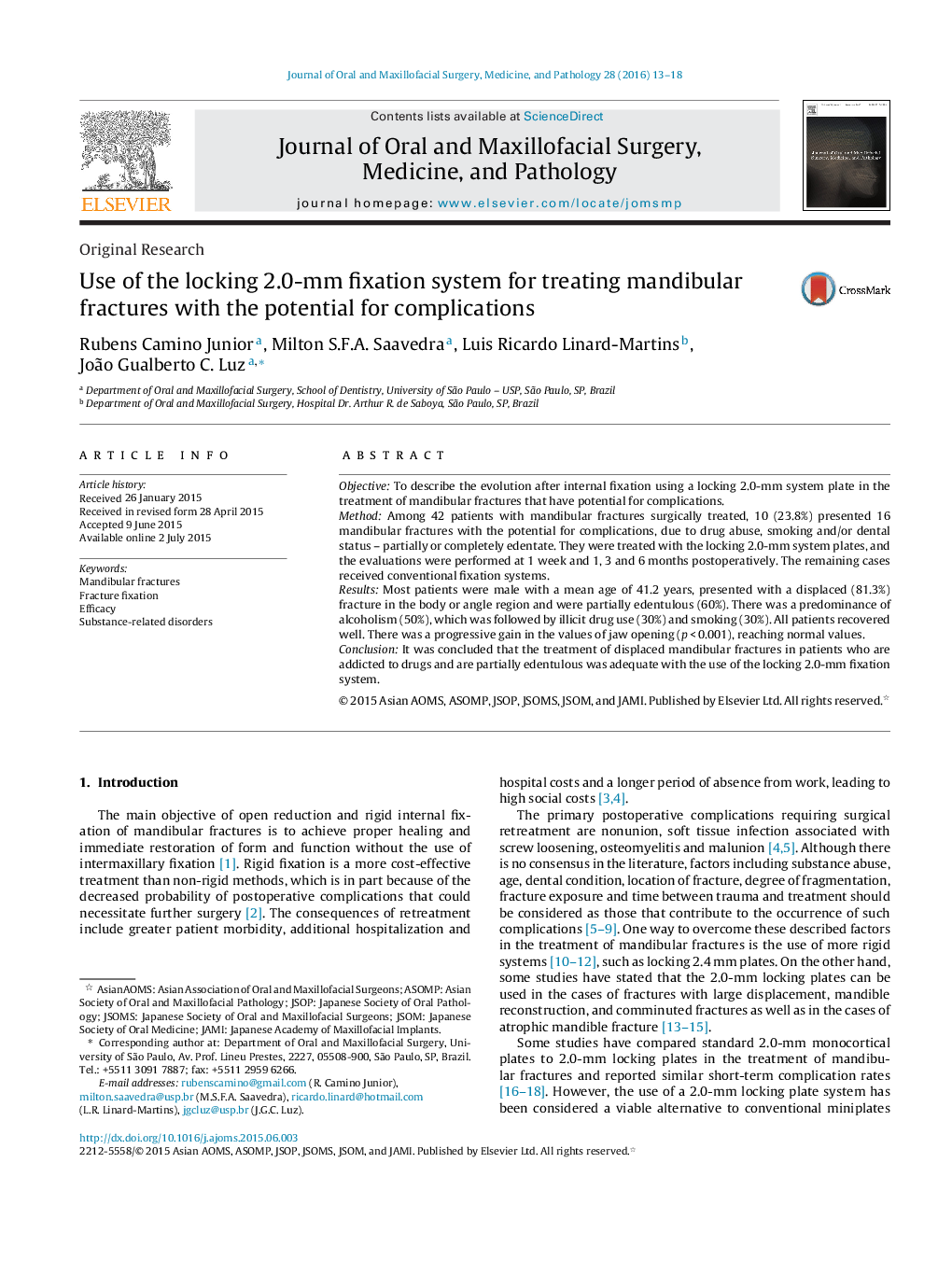| Article ID | Journal | Published Year | Pages | File Type |
|---|---|---|---|---|
| 3160357 | Journal of Oral and Maxillofacial Surgery, Medicine, and Pathology | 2016 | 6 Pages |
ObjectiveTo describe the evolution after internal fixation using a locking 2.0-mm system plate in the treatment of mandibular fractures that have potential for complications.MethodAmong 42 patients with mandibular fractures surgically treated, 10 (23.8%) presented 16 mandibular fractures with the potential for complications, due to drug abuse, smoking and/or dental status – partially or completely edentate. They were treated with the locking 2.0-mm system plates, and the evaluations were performed at 1 week and 1, 3 and 6 months postoperatively. The remaining cases received conventional fixation systems.ResultsMost patients were male with a mean age of 41.2 years, presented with a displaced (81.3%) fracture in the body or angle region and were partially edentulous (60%). There was a predominance of alcoholism (50%), which was followed by illicit drug use (30%) and smoking (30%). All patients recovered well. There was a progressive gain in the values of jaw opening (p < 0.001), reaching normal values.ConclusionIt was concluded that the treatment of displaced mandibular fractures in patients who are addicted to drugs and are partially edentulous was adequate with the use of the locking 2.0-mm fixation system.
